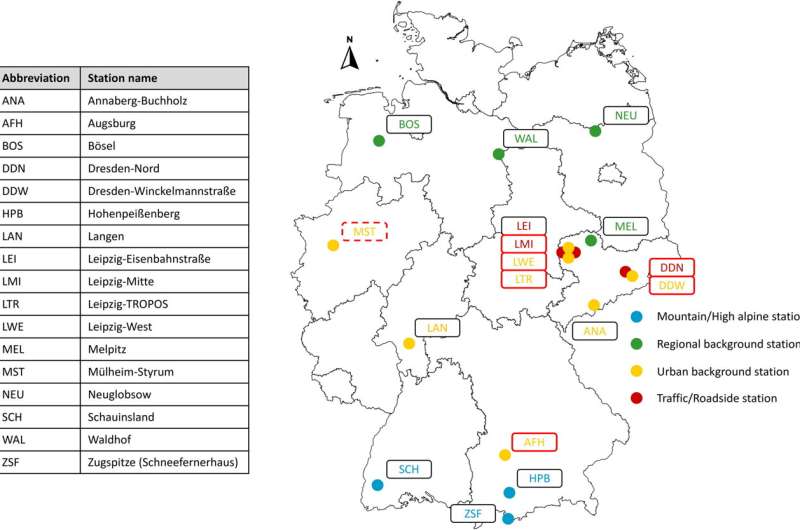Ambient ultrafine particles may be more dangerous to human health


A new study conducted by Helmholtz Munich researchers reveals that ultrafine particles, representing the smallest size fraction of particulate air pollution, might be more dangerous to human health than larger particles. These findings add to the growing body of evidence that it may be insufficient to focus on larger particle concentrations and gases when assessing public health risks. It was now published in the American Journal of Respiratory and Critical Care Medicine.
There is concern that ultrafine particles (UFPs; particles with a diameter of less than 0.1 µm) can cause more health problems than larger particles. UFPs represent the smallest size fraction of particulate air pollution but differ from larger particles in many ways. For example, they contribute negligibly to particle mass but dominate in number concentration and have a large surface area and reactivity that allows UFPs to transport more chemical compounds. However, evidence on the health effects of UFPs is still limited.
A team of researchers around Prof Dr. Annette Peters, Dr. Susanne Breitner-Busch and Maximilian Schwarz from the Institute of Epidemiology at Helmholtz Munich has now investigated the effects of particles of different sizes on cause-specific mortality using data from a dedicated monitoring campaign. They found an increased risk of death due to respiratory disease—especially for smaller particles compared to larger particles.
The researchers conducted a multicenter epidemiological study over eight consecutive years from 2010 to 2017 in the three German cities of Dresden, Leipzig, and Augsburg. This study is one of the first to use several measurement stations per city to reflect different exposure situations and used a novel statistical approach to analyze the data.
These data from a highly specialized measurement campaign enabled the scientists to achieve high standardization and comparability between the monitoring stations—a major problem when measuring and analyzing UFPs.
Increased risk of respiratory mortality—especially for smaller particle sizes
The researchers reported a significantly increased risk of respiratory mortality five to seven days after exposure to UFPs. It could be shown that for an increase of 3,223 particles/cm3 in concentration the risk of respiratory mortality increased by 4.46 % (95 % confidence interval: 1.52 % to 7.48 %).
These results were independent of other particulate air pollutants (e.g., PM2.5), suggesting an autonomous effect of these particles. In addition, further analyses showed that the smallest particle sizes had more pronounced effects on respiratory mortality.
Moving beyond fine particle mass
“These results provide an additional step towards a better understanding of the health effects of ultrafine particles and their potential inclusion in future routine monitoring,” concludes Maximilian Schwarz. As one first step, the World Health Organization published good practice statements in 2021, specifically calling for more UFP data and the need for epidemiological studies.
“The study’s findings add to the evidence that it may be important to focus our air quality monitoring and public health risk assessment on concentrations larger as well as ultrafine particles and gases,” Prof Dr. Annette Peters states. If the body of studies strengthens, mitigating other pollution classes, such as UFPs, would positively impact public health.
More information:
Maximilian Schwarz et al, Impact of Ambient Ultrafine Particles on Cause-Specific Mortality in Three German Cities, American Journal of Respiratory and Critical Care Medicine (2023). DOI: 10.1164/rccm.202209-1837OC
Journal information:
American Journal of Respiratory and Critical Care Medicine
Source: Read Full Article